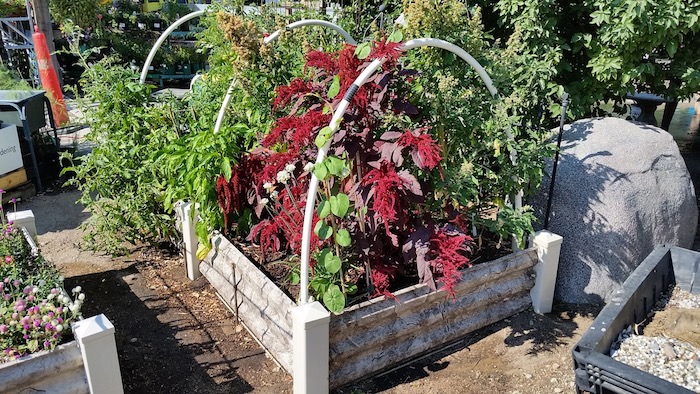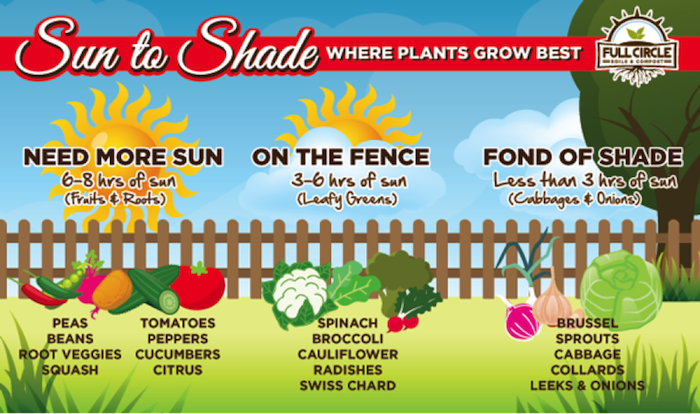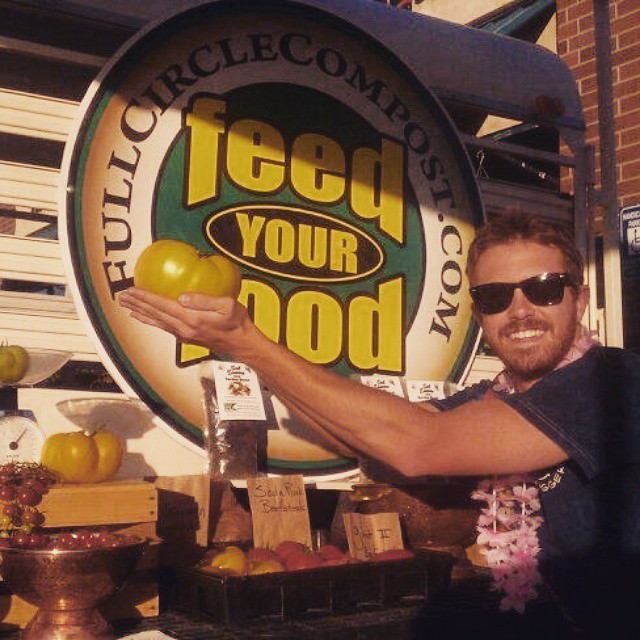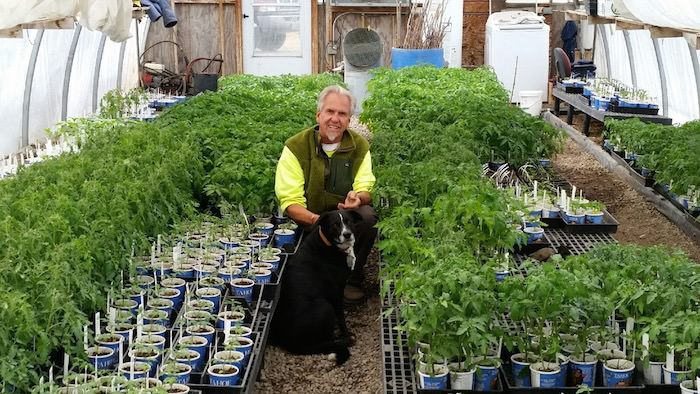The green-thumb rules of transplanting
Plants prefer gentle transitions from indoors to the great outdoors, and it’s up to us to provide that transition. Now, there’s no need to rub your hands together for warmth before handling baby seedlings, but there are a few things that will make their transition more comfortable:
- Baby seedlings are not strong enough to go from indoors to the harsh sun and wind outdoors in one swift trip; they need to be hardened off first. Give your plants a proper adjustment period of about 10 days. Slowly increase the amount of exposure each day.
- While your plants are transitioning, amend your soil with all-natural amendments and organic fertilizers. (Of course, we would recommend Full Circle’s all-natural PUNCH Liquid Probiotic and BOOST Organic Soil Amendment.) The goal is to make the soil as welcoming as possible, with plenty of good-guy bacteria and water-soluble goodies. There has to be something to eat once the new plants take root in their final destinations.
- Plants aren’t so fond of being pulled from their cozy homes in their current soil, but that’s exactly what we’re doing during transplanting. To ease the transition, push on the plant through the bottom of the container instead of yanking it out. You can also turn the plant on its head, stabilize the stem between your fingers, and shimmy the plant out.
Watch Farmer Craig transplant three-week-old tomato seedlings from seed tray to four-inch pot.
Companion Growing
It’s no secret: Spending time with friends is good for you! But did you know that plants have friends, too? Placing compatible plants next to each other allows them to benefit from the company. Companion growing is a low-maintenance way to keep your garden healthy. It helps deter pests, increase yield, and even improve flavor.
- Put sun lovers with shade lovers. With companion planting, there are a few factors to consider before getting your hands dirty. First, choose plants with mutual climate cooperation. This means when the plants mature to their full size, they complement the plants growing nearby. Tall plants that love lots of sun, for example, should be planted next to shorter, shade-loving plants. It’s the buddy system.
- Plant annuals with perennials. Planting annuals next to perennials, known as nurse cropping, can help perennials acclimate to long periods of sun and wind exposure. When annuals are planted to reduce soil erosion, they simultaneously protect perennials’ roots.
- It’s a trap! (Trap cropping, that is.) Trap cropping is the method of planting a sort of decoy plant to attract pests and keep your precious tomatoes healthy. Popular decoy plants are collards. These draw in moths and can keep nearby cabbages pest free. If you like collards and don’t want to sacrifice them for cabbages, plant sunflowers around the perimeter of your garden to protect the rest of your smaller plants.
- Grow a party with biodiversity. Mix it up a little in your garden—planting lots of different vegetables can prevent infestation. Remember, before you plant all different kinds of lettuce, check that each has a different genus for this trick to be effective. If the plants are too similar, it doesn’t count as biodiversity. Bok choy and broccoli, for example, are in the same genus, Brassica, so planting them together won’t create a beneficial biodiversity.
- Attract the right insects. Enhance your habitat by attracting beneficial insects such as bees and ladybugs. Helpful bugs do the heavy lifting, like pollinating and eating smaller pests that threaten your plants, including aphids.

Salsa garden grown at Greenhouse Garden Center in Carson City by Farmer Craig. Tomatoes, basil, and peppers … yummmm!
Like lists? Here’s another one! The following plants prefer to be neighbors in the garden and at your table:
Sage & bush beans: Sage protects bush beans from hungry critters. Parasites detest the smell of sage, which protects bean plants. Bush beans also grow well with cucumbers, eggplants, garlic, kale, and strawberries. Be careful, though: Three’s a crowd if you plant cucumbers, too, as sage and cucumber do NOT get along.
Carrots & chives: Chives keep aphids, mites, and nematodes off your carrots.
Parsley & asparagus: Planting parsley alongside asparagus will stimulate the asparagus plant’s growth. Parsley also keeps asparagus beetles at bay. So what’s in it for parsley? It just so happens that parsley likes partial shade, so these two get along quite nicely.
Cabbage & mint: Mint keeps moths, aphids, and beetles off your cabbage.
Strawberries & thyme: Thyme helps strawberries thrive and also attracts pollinators to your garden. These two also have a common friend in spinach.
Marigolds & … everything!: Your whole garden will benefit from marigolds. Plant these fragrant beauties throughout your garden to confuse pests as they search for their favorite fruits and veggies.

Need some help deciding where to plant your veggies? Check out this helpful infographic.
Shade-loving vs. sun-loving plants
Some plants prefer a cool, shady environment while others — including tomatoes, peppers, and citrus plants — want to bask in the sun all day long. Understanding length and intensity of sun exposure also will inform how much water your plants need and when the most effective time of day is for watering your plants.

A Full Circle-grown, 2-pound, 10-ounce Striped German tomato. This may be the biggest grown in Nevada.
Basil and tomatoes: the best of friends
Tomatoes have lots of friends in the garden, but they are best buds with basil. The aroma from basil deters insects such as hornworms and mosquitos from noshing on precious tomato fruits. Basil also is known to improve the flavor of the tomatoes because of shared soil nutrients.
Transplanting your tomato seedlings
When your tomato seedlings are three to four inches tall, it’s time to transplant them into their new, roomier homes. Here are a few tips for properly transplanting your precious tomatoes:
- Water the new soil well before transplanting. Moist soil is more welcoming to the roots and will prevent the plant from drying out.
- Plant the seedlings about three inches apart.
- Watch these videos to see how Farmer Craig as he shows you how to
- transplant tomato seedlings, the easy way:
- transplant your big tomatoes from a pot to raised bed:
Check in next month, and we’ll pick back up in the garden with maintenance and watering tips. Now, get out from behind your computer and get to gardening.
Follow Full Circle Compost:
NOTE: This is a sponsored post.
Cody Witt manages and operates Full Circle Soils & Compost along with his dad, Farmer Craig. Full Circle’s all-natural products help gardeners and growers repair and sustain healthy, nutrient-rich soils. He also creates “Full Circle” environmental networks in which partners help to establish a fully sustainable community of suppliers and producers through organic materials recycling; soil-fertility program implementation; sustainable, beyond-organic food and medicine production; and education. Cody Witt is a fifth-generation Nevada farmer who completed his MBA and multiple undergraduate degrees from the University of Nevada, Reno.



